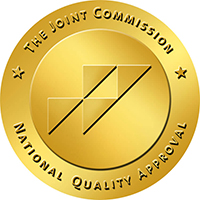Obsessive Compulsive Disorders

About Obsessive Compulsive Disorders
A person living with obsessive-compulsive disorder has uncontrollable thoughts (obsessions) that lead them toward repetitive behaviors (compulsions) and make it difficult to carry out daily responsibilities. Cases of OCD include obsessions, compulsions or both. The obsessions are repeated urges, mental pictures and thoughts that invade the mind and create severe anxiety for the individual.
Obsessions are understood to be neutralizing rituals prompted by an obsessive thought. When a person with OCD begins to receive an obsessive thought that their hands are ridden with germs and they begin to think they could be at risk for catching a disease, it might lead them to the compulsion to excessively wash their hands - over and over again.
OCD can be extremely time-consuming and make life feel very difficult for the person living with it. At least one hour a day is drained by thoughts and behaviors. And while performing the compulsive acts can ease the anxiety the obsessions bring on, a person living with OCD finds no pleasure in this behavior. Affected individuals typically understand how excessive and unreasonable their obsessions and compulsions are, but they have no control over them. This can make the situation even more distressing.
Symptoms of Obsessive Compulsive Disorders:
Some examples of common obsessions include:
- Fear of dirt, germs and contamination
- Obsessive fear that you forgot to do something, like turning off the stove
- Excessive need to have things in order, organized with symmetry
- Forbidden or inappropriate thoughts
- Aggressive thoughts towards the self or others
- Body checking
Other than obsessive hand washing, some common compulsions include:
- Excessive cleaning and organizing the same place or objects over and over again
- Arranging objects in perfect, symmetrical ways
- Obsessive counting
- Hoarding
Why There Is Hope for Obsessive Compulsive Disorders
Living with OCD can make a person feel helpless and out of control of their own life. But there is hope. At Solstice Pacific, it is possible to overcome the fears and behaviors that hold the person back from being able to enjoy what life has to offer.
Helping A Loved One and Early Intervention for Obsessive Compulsive Disorders
While adults with OCD can recognize their abnormally obsessive thoughts and compulsions, children are typically not able to see the disorder within themselves. Teachers and caregivers should be aware of the signs of obsessive-compulsive disorder and help a young person get help if they suspect they might need it.
Adults with constant, disturbing thoughts that are uncontrollable and urges to repeat obsessive behaviors may need a medical evaluation for OCD. The sooner an affected person is able to get support, the closer they are to freedom from their fears and anxiety.
How We Treat Obsessive Compulsive Disorders
Treatment is different for every case of obsessive-compulsive disorder because each person’s story is unique and important. After initial screening by a clinician, a person diagnosed with OCD can begin the treatment process. Cognitive behavior therapy (CBT) can help them learn new ways of thinking and behaving. People with OCD can learn to deal with the anxiety brought on by the disorder in productive, healthy ways. Social support, art, music and writing are vital parts of our treatment of OCD.
OCD is also closely tied to chemical deficiencies or inflammation in the brain. Targeting this with a functional approach can provide relief in symptoms. Pharmacotherapy with antidepressants is also beneficial in mitigating feelings of control and rigidity.
What Ongoing Care Looks Like for Obsessive Compulsive Disorders
Learning to manage stress in general can positively impact a person’s well-being, especially those in recovery for OCD. Keeping up with established therapy routines and all aspects of the treatment plan will keep a person on the path to success when it comes to keeping OCD under control. OCD is something that some people live with for a very long time, but the good news is - it doesn’t have to control a person’s life. With proper care and the right support, it is possible to take back control over thoughts and behaviors and live a fully-functioning life every person deserves. Your treatment plan will include your goals and ideas, while redefining perfection, enough or identity.
Symptoms of Obsessive Compulsive Disorders:
Some examples of common obsessions include:
- Fear of dirt, germs and contamination
- Obsessive fear that you forgot to do something, like turning off the stove
- Excessive need to have things in order, organized with symmetry
- Forbidden or inappropriate thoughts
- Aggressive thoughts towards the self or others
- Body checking
Other than obsessive hand washing, some common compulsions include:
- Excessive cleaning and organizing the same place or objects over and over again
- Arranging objects in perfect, symmetrical ways
- Obsessive counting
- Hoarding




